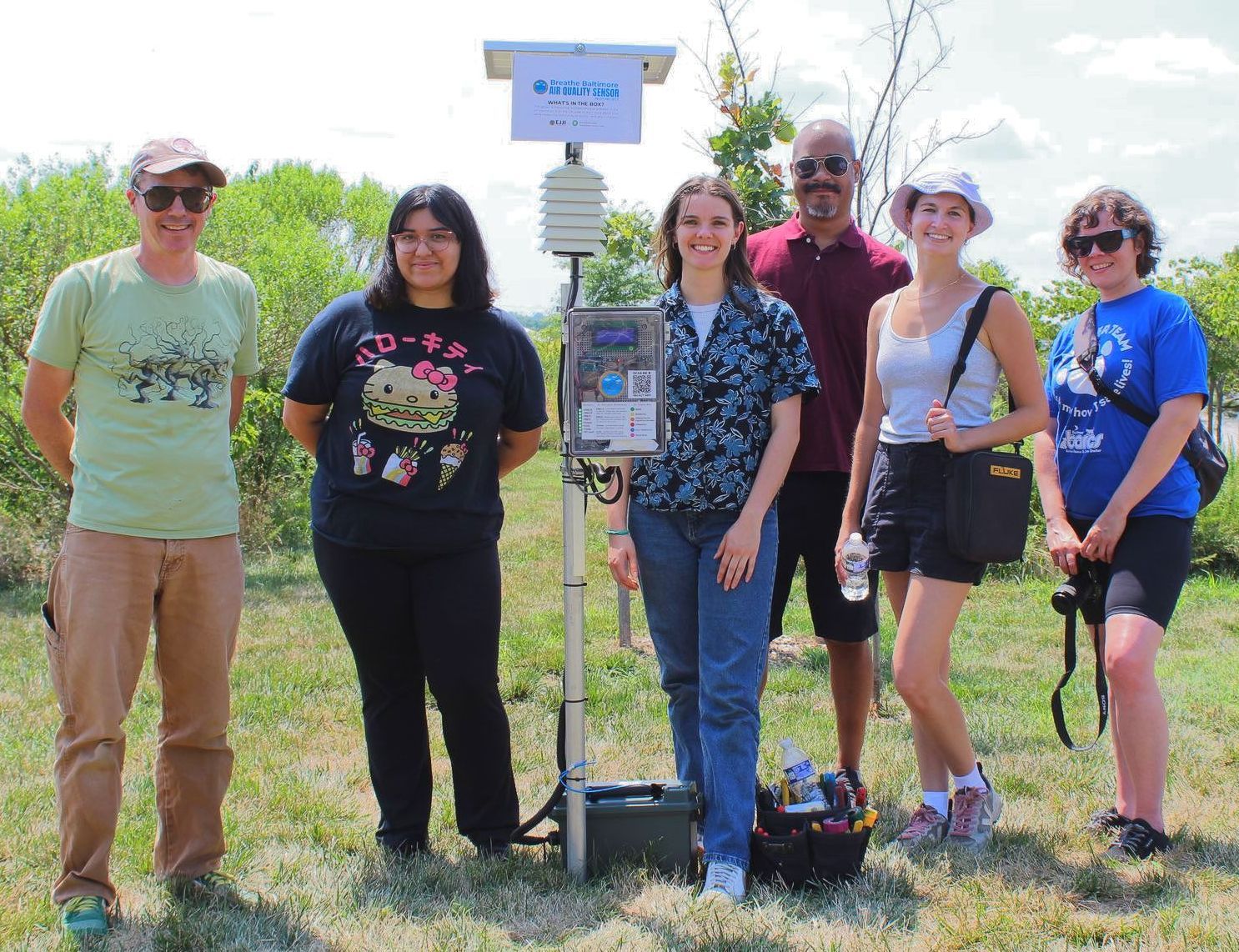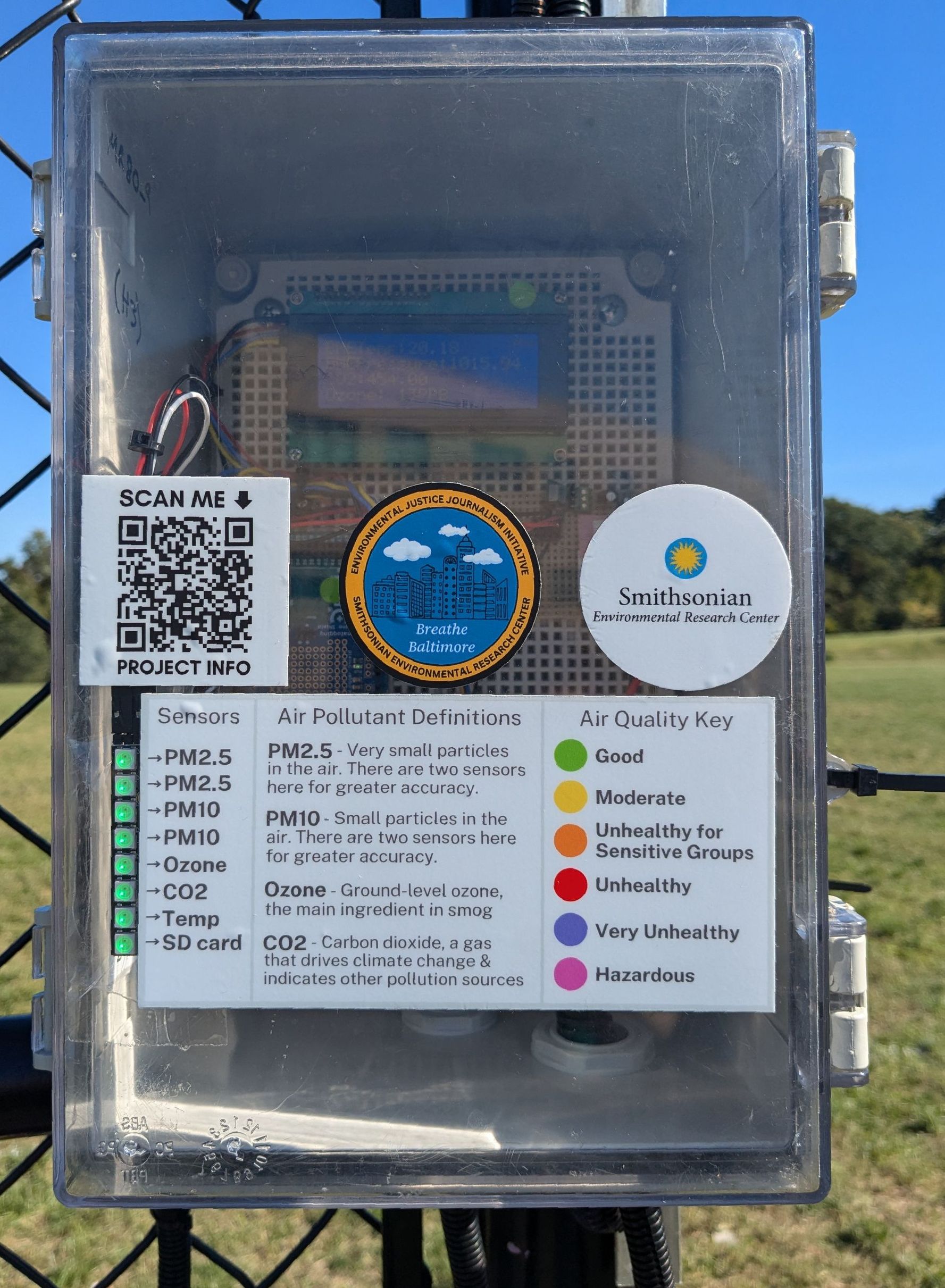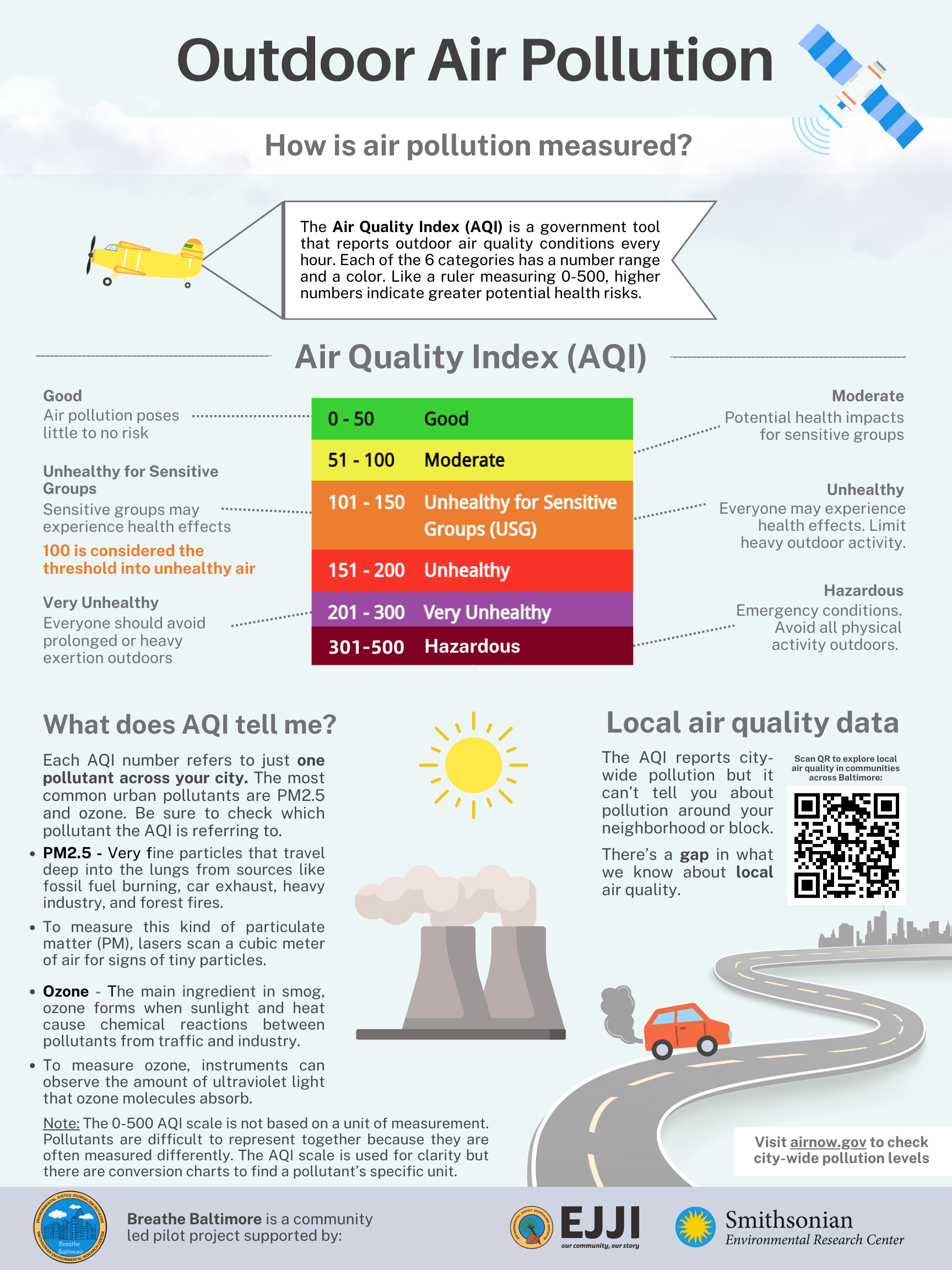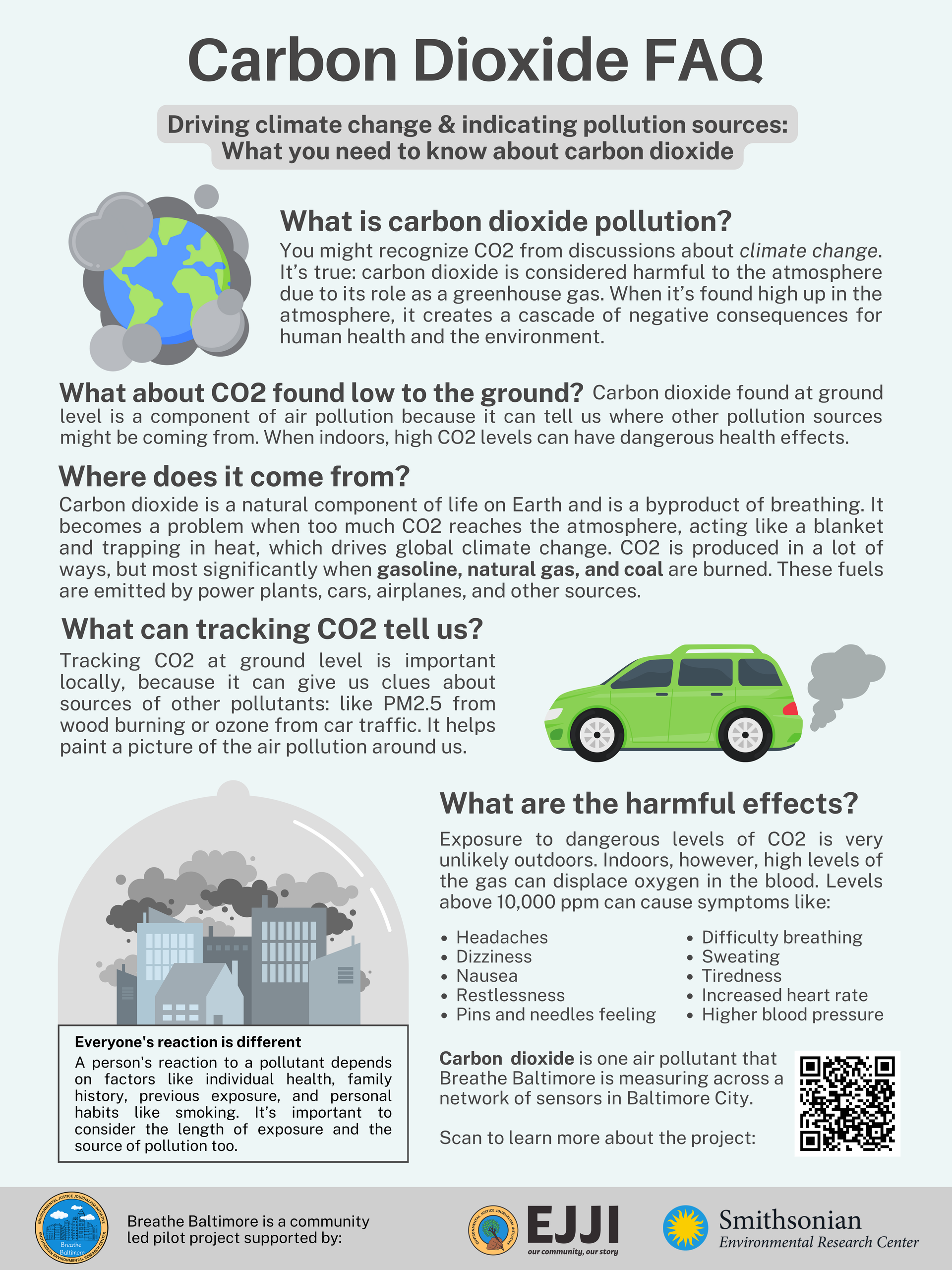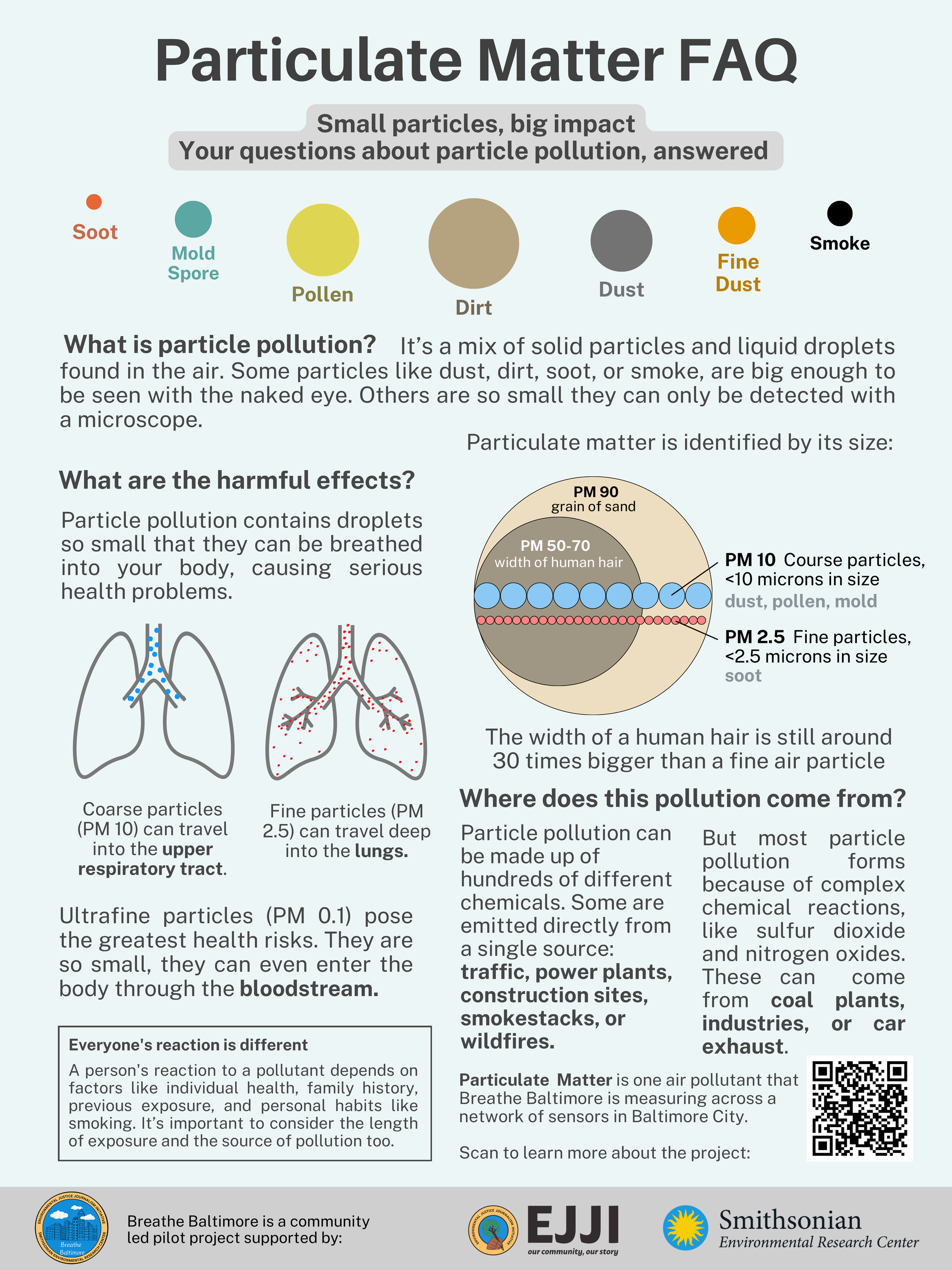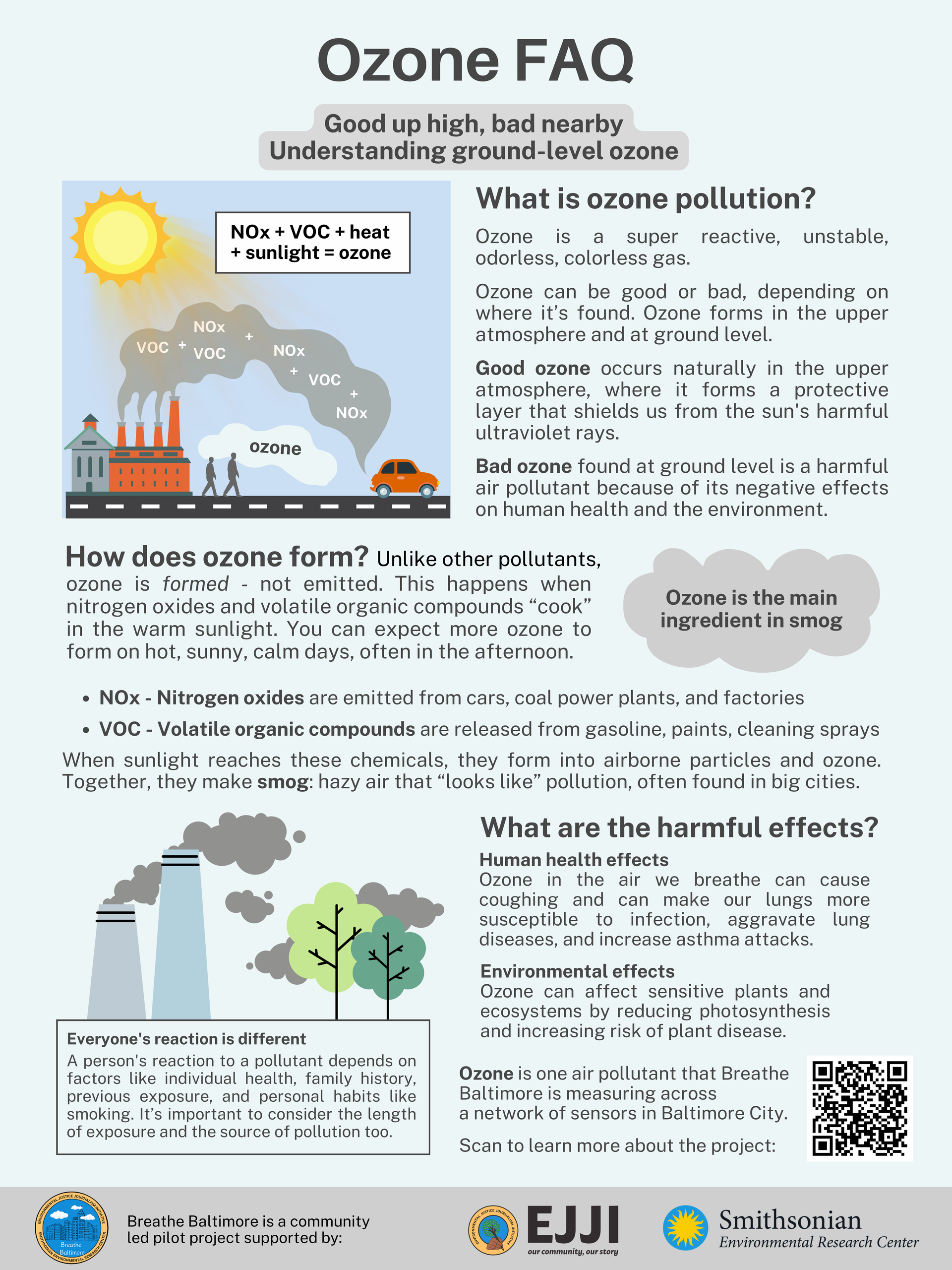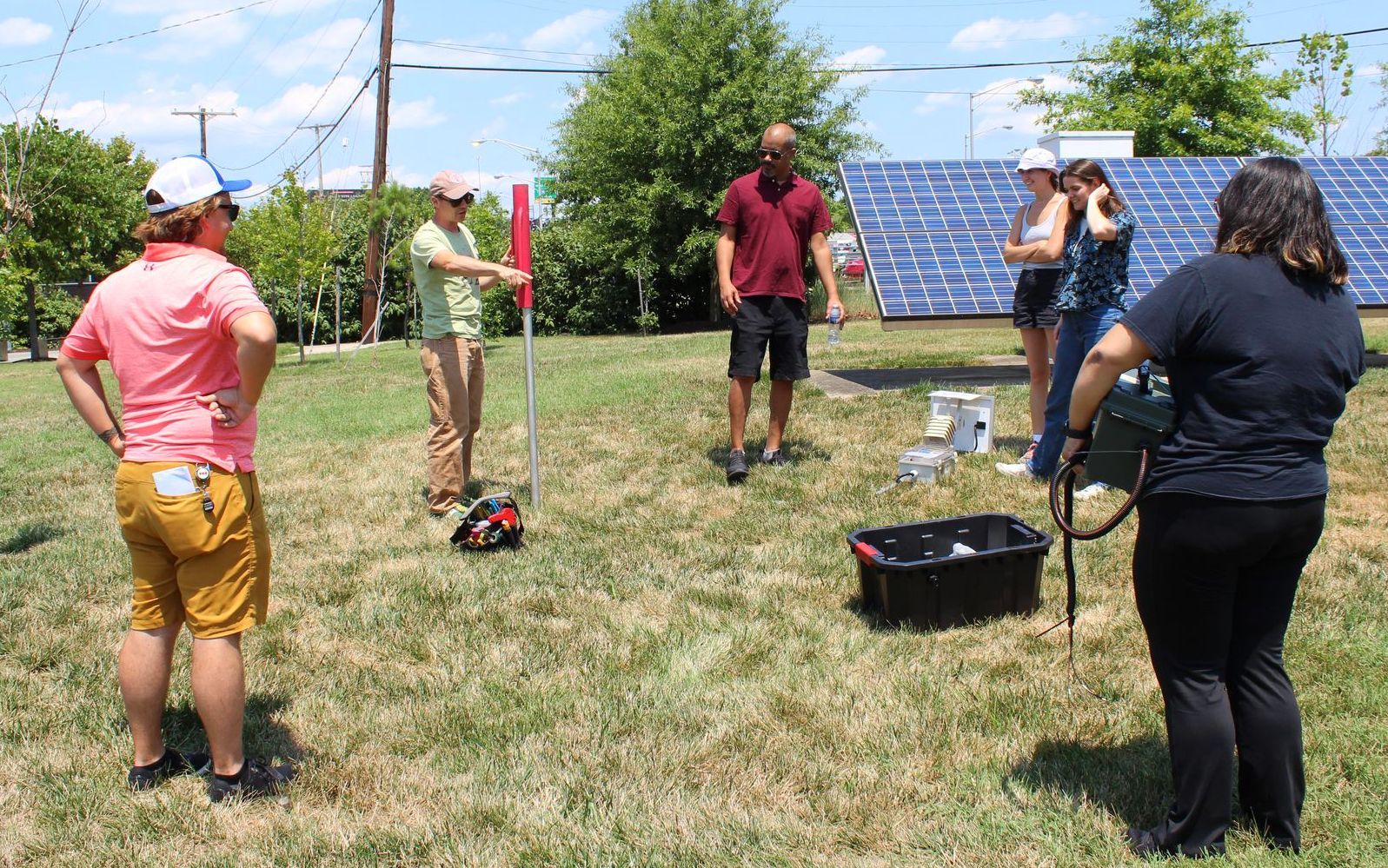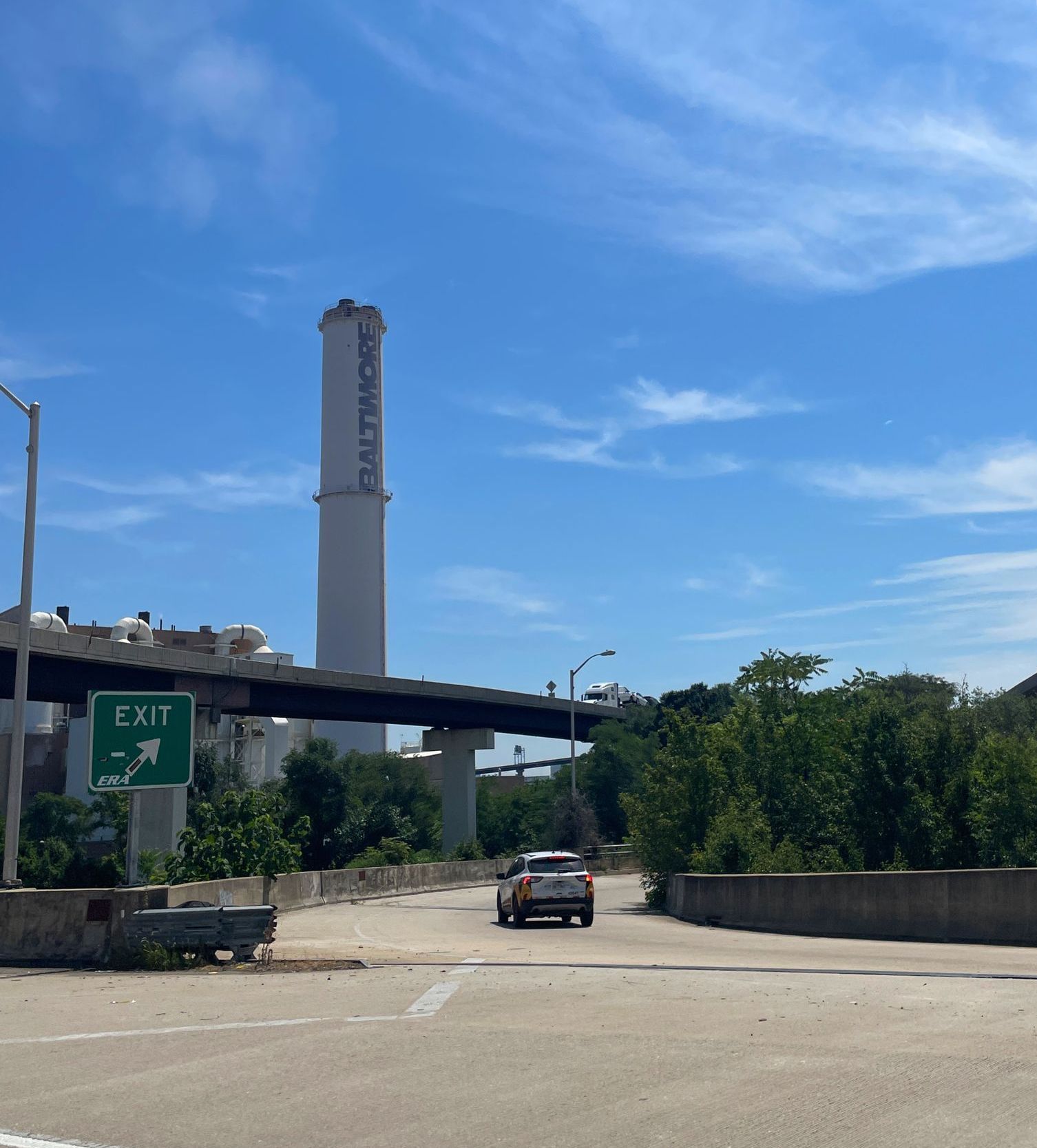About the Project
Breathe Baltimore is a community-based research project addressing air quality issues in South Baltimore. This project is in partnership with the
Smithsonian Environmental Research Center (SERC) and the Environmental Justice Journalism Initiative (EJJI). Baltimore’s history of industrial pollution and other environmental injustices is felt today. This project aims to provide data to support Baltimore communities suffering from poor air quality. See the "Air Quality Facts" section below for more information on air pollution and its impacts.
SERC and EJJI have deployed 14 out of 15 air quality sensors across South and West Baltimore in late 2024 to early 2025. See "Host Sites and Partners" for more information on host sites and neighborhoods being measured.
These sensors measure particulate pollution, ozone, and other emissions. Local air quality data is available on the interactive map below. Sites for future monitoring are being selected. Contact us if you are interested in hosting a free monitor using the emails in the "Have a Question" section. SERC and EJJI are committed to choosing sites relevant to Baltimore communities and understanding city pollution patterns.
Air Quality Sensors and Data
Our sensors allow us to monitor how much pollution is in the air. They measure air quality by particulate matter (PM) or how many particles of pollution are in the air.
Each sensor has a display box with information about the current air quality at that site. Community members can see the air quality status in real time by the lights found on the front of the sensor. See the image to the right or "Air Quality" section for more information.
Data is recorded every 15 seconds by the sensor. Community volunteers help collect and send the data to the Technology in Ecology Lab at SERC. See the "Get Involved" section below if you are interested in volunteering or becoming a host site. The data collected is free and open source. See "Local Air Quality Data" for recent air quality conditions at our sites.
Air Quality Facts
The infographics below can help better understand why monitoring air quality is important.
Air Pollution and its Impacts (First Row of Images)
- What is air pollution?
- How does air pollution affect my body?
- How is air pollution measured?
Pollutants and the Ozone (Second Row of Images)
- Carbon Dioxide
- Particulate Matter
- Ozone
Click the images to view them in full-screen:
Host Sites and Partners
A community-based project, the stewardship of Baltimore organizations is key to successfully monitoring air quality. Below is a list of over 10 local groups that are host sites for air quality sensors:
Host Sites
- A Lot Matter
- Ark Church
- Baltimore Blue Way - West Covington Park (test site)
- Baltimore Community ToolBank
- Baltimore Convention Center
- Baltimore Urban Gardening with Students (BUGS)
- Bay Brook Elementary/Middle School
- Bilingual Christian Church
- Federal Hill Preparatory School
- Filbert Street Garden
- Fort McHenry Research Wetland
- Stillmeadow Community Fellowship
- Strength to Love II Farm
- Waterfront Partnership Of Baltimore - Pierce's Park
Local Air Quality Data
The black pins on the interactive map below showcase our air quality monitoring sites. Click the pins to see the site name and the link to the data. Data is updated on a weekly to bi-weekly schedule. The data sheet has a designated tab for each pollutant (i.e., PM 2.5, PM 10, Ozone, and Carbon-Dioxide). Daily averages and their category (i.e. Good, Moderate, Unhealthy for Sensitive Groups (USG), Unhealthy, Very Unhealthy, Hazardous) can be found for each type of pollutant.
Get Involved
Sites selected to house the air quality monitoring systems will be located throughout South Baltimore. Sensors are low-power and will be placed in secure locations. Local stewards will be needed to help record and share the data with SERC scientists.
If you are interested in helping collect and share air quality data, please sign up as a volunteer and reach out to veronica@ejji.org.
We have interns and technicians who can help with this or we can teach you how to do this yourself. There is no need for technical knowledge of how these sensors work!
Follow the steps below to sign up as a volunteer:
- Fill out this Google Form (click here)
- For question 5, select "Air quality testing"
Have questions?
Feel free to reach out to the following people if you have questions about:
- Sensors and Data - SERC
- Director of Public Engagement, Alison Cawood, CawoodA@si.edu
- Principal Investigator, Research Scientist, Roy Rich, RichR@si.edu
- Volunteering and Site Questions - EJJI
- Environmental Science Programs Manager, Veronica Lucchese, veronica@ejji.org

